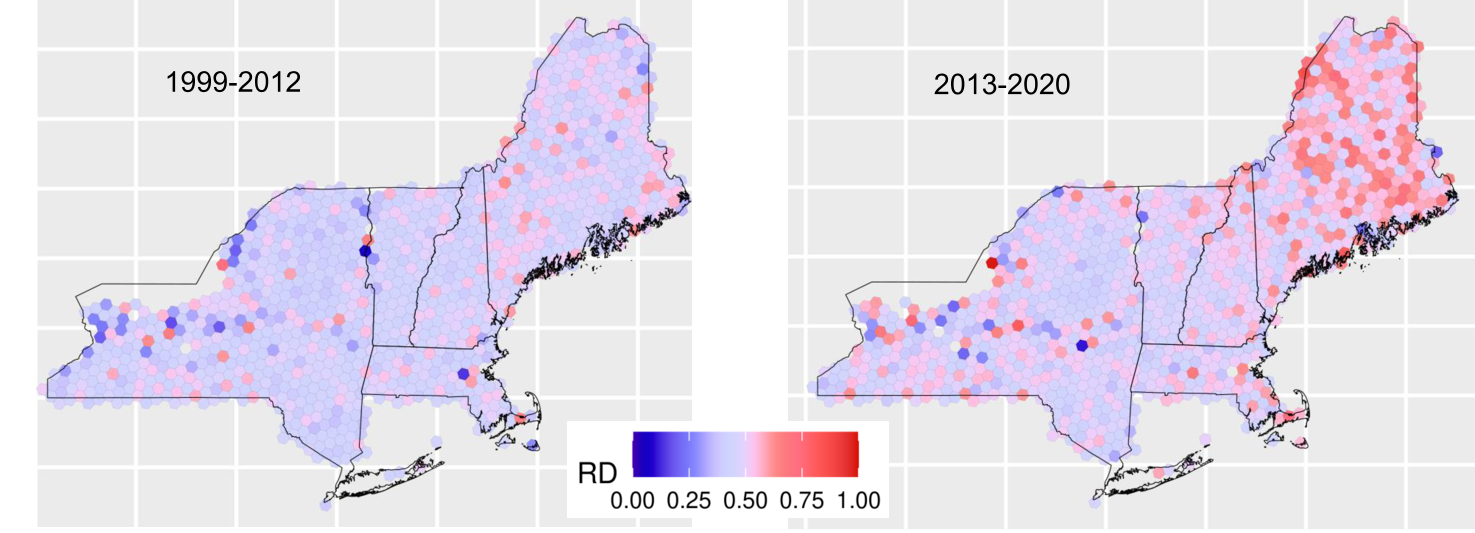
US Forest Size-Density at Potential Tipping Point?
The number of trees that can occupy any given space—known as live tree size-density metrics—have informed the management of forest stands for many decades. Monitoring key forest attributes across time and space is vital to ensure the health and effectiveness of large-scale management efforts and policies. This just-released peer-reviewed article in Scientific Reports (www.nature.com/articles/s41598-021-98244-w), co-authored by University of Maine Professor (and CRSF Director) Dr. Aaron Weiskittel, provides a novel baseline assessment of current US forest relative density and evaluate the trends in size-density attributes of US forests nationally over the last two decades, which may assist managers and policy makers to determine the optimal course of action relevant to future forest carbon trajectories, land use planning, potential risks to disturbance, and strategies to increase the resilience of US forests in the face of global change. Maine, in particular, is among the states with the largest increase in high relative density conditions over the past decade which may, in turn, lead to a decrease in future productivity and even reverse the role that forests play in climate mitigation.

As highlighted in the study, the dramatic changes in forests seen over the last two decades directly relates to a variety of factors including public policy (e.g., National Forests management policies and in Maine, the Forest Practices Act), land use shifts, lack of low-grade fiber markets, and the accumulation of extensive disturbance events caused by wildfires or extended droughts. The study authors conclude that forest management may be needed to explicitly address live tree density reduction across strategic-scales to increase ecosystem resilience to expected global change-induced disturbances (e.g., wildfires, droughts, and/or insects/disease). Without such interventions, we can expect the current trends of progression to high RD conditions to continue, which may decrease future productivity and even reverse the role that forests play in climate mitigation.
